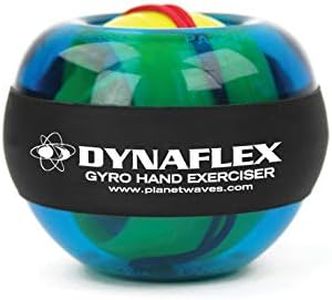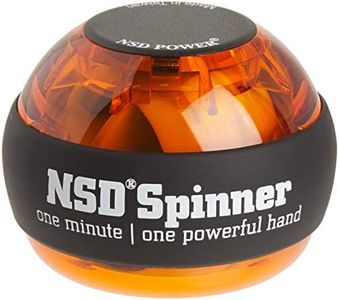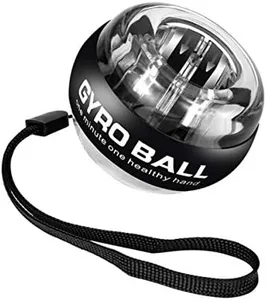We Use CookiesWe use cookies to enhance the security, performance,
functionality and for analytical and promotional activities. By continuing to browse this site you
are agreeing to our privacy policy
10 Best Powerball Gyro
From leading brands and best sellers available on the web.Buying Guide for the Best Powerball Gyro
Choosing a Powerball gyro, also known as a gyroscopic wrist exerciser, can greatly enhance your grip strength, wrist flexibility, and forearm muscle tone. These devices use a spinning rotor inside a handheld shell to create resistance as you move it, making them an excellent tool for exercise, rehabilitation, or simply as a fun gadget. To pick the best Powerball gyro for your needs, it's important to look at certain features and understand how they fit with your goals—whether that's light rehab, athletic training, or just fidgeting for stress relief.Rotor Speed (RPM)Rotor speed, measured in revolutions per minute (RPM), tells you how fast the rotor inside the Powerball can spin. This is important because higher speeds create more resistance, making the workout harder and potentially more effective for muscle building. Powerball gyros can have a basic range of around 8,000 RPM, which is good for beginners and light therapy, up to 18,000+ RPM for more intense workouts. If you're just starting or using the Powerball for rehabilitation, a lower RPM is easier to manage and safer. For advanced users who want a challenging exercise, a higher RPM makes sense.
Grip Material and TextureThe grip material and surface texture ensure comfort and control during use. Grips can vary from smooth plastic to rubberized, textured surfaces. Soft or rubberized grips are gentler on the hands, reduce slipping, and are better for longer sessions or those with sensitive skin. Smooth or hard plastic grips may last longer but can be slippery when your hands get sweaty. If you plan on using the Powerball frequently, especially for longer periods, or have sensitive hands, opt for one with a soft, non-slip grip.
Starting MechanismThe starting mechanism refers to how the gyro is first set in motion. Some Powerball gyros must be started manually with a string, while others use auto-start mechanisms that you can wind up and release. Manual start types can be a little tricky at first, especially for beginners, but are usually more durable. Auto-start gyros are easier for quick use, making them more beginner-friendly or convenient if you have mobility issues in your fingers. If quick, hassle-free sessions are your priority, auto-start may be best.
Display and FeedbackSome Powerball gyros come with built-in digital displays or counters to show RPM, session duration, or strength stats. This is valuable for tracking your progress, setting personal goals, or making your workouts more engaging. However, basic models without displays are less expensive and less likely to need battery replacements. If you like tracking your stats or want extra motivation, consider a model with a display, but if you prefer simplicity, this feature isn’t essential.
Weight and SizeThe weight and size of a Powerball gyro affect how easy it is to hold and how intense the workout feels. Heavier models give a more intense resistance workout, which suits experienced users or those aiming to build muscle. Lighter, more compact units are easier to manage, especially if you have smaller hands or plan to use it for rehabilitation. Choose lighter, smaller models if you want portability or recovery support, and heavier or standard-sized ones for more strenuous exercise.
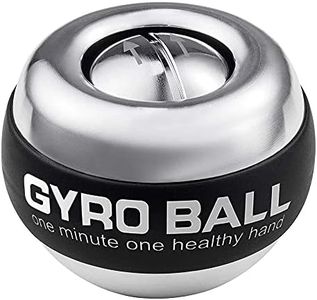
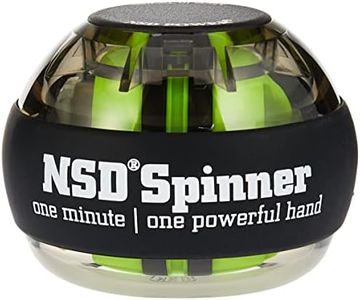
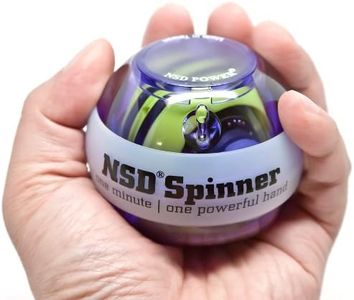
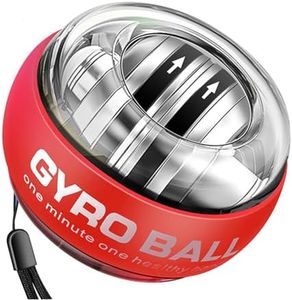
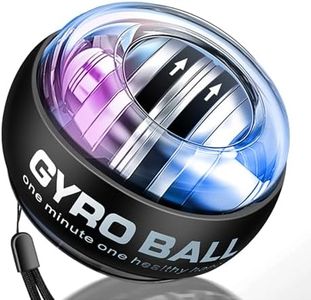

![NSD Power Spinner spinner for Auto Start Function beginner [Japan Genuine] PL insurance products Black](https://images-proxy.bestreviews.guide/1hihQwjDTEvhnsUqb2Xh7eGNhZ0=/0x300/https://m.media-amazon.com/images/I/41F+xKoNjWL._AC_CX679_.jpg)
